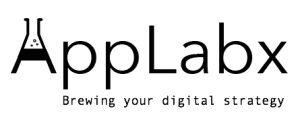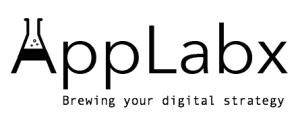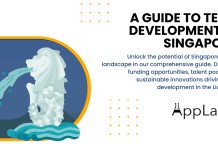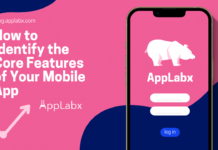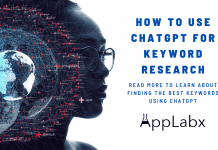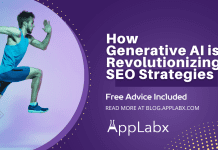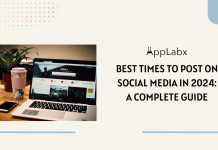Key Takeaways
- AI-powered tools now drive predictive keyword research, automated A/B testing, and hyper-localized ASO strategies for global growth.
- Platform-specific optimization is essential as Apple focuses on metadata and sentiment, while Google prioritizes performance and technical health.
- Ethical AI governance, data privacy compliance, and full-funnel KPI alignment define sustainable ASO success in 2026.
The mobile application ecosystem has evolved at an unprecedented pace, and as we move into 2026, App Store Optimisation (ASO) has become a central pillar in the strategy for app growth and visibility. Once considered a tactical marketing tool, ASO is now recognized as a critical, data-driven infrastructure that influences user acquisition, retention, and overall revenue generation. In an era defined by the integration of Artificial Intelligence (AI) into every layer of mobile marketing and product management, the role of ASO has shifted from manual keyword optimization and basic metadata adjustments to a sophisticated, predictive, and fully automated system that drives measurable business outcomes.

The global app economy is projected to reach extraordinary levels by 2026, with consumer spending on premium apps, in-app purchases, and subscriptions expected to surpass $233 billion. Total global app downloads are forecasted to exceed 255 billion, led primarily by Google Play, which is expected to dominate first-time downloads. This growth trajectory emphasizes the critical need for highly efficient, scalable, and intelligent ASO strategies. AI-powered tools now play a pivotal role in analyzing massive datasets, predicting emerging keyword trends, and automating creative optimization processes, allowing developers and marketers to maintain a competitive edge in a market that is both hyper-competitive and fast-moving.
The evolution of ASO in the age of AI is not just about visibility—it is about aligning app store strategies with the full-funnel user journey. Modern ASO strategies integrate predictive keyword intelligence, automated A/B testing, hyper-localization for global markets, and real-time adaptation to platform-specific algorithms. On the Apple App Store, structured metadata, creative conversion optimization, and sentiment management are increasingly prioritized, while the Google Play Store emphasizes technical app health, performance signals, and semantic long-form content to drive discoverability. This divergence necessitates a platform-specific approach, where ASO strategies are closely aligned with product engineering, marketing, and creative teams to ensure holistic optimization across both stores.
Furthermore, the rise of Agentic AI—intelligent systems capable of independent decision-making and multi-step task execution—is transforming how ASO is executed. AI now handles complex, multi-dimensional tasks, from generating and testing creative assets to adjusting metadata dynamically based on predicted user behavior. This shift enables near-real-time optimization cycles, reducing reliance on manual processes and creating significant efficiency gains. The integration of AI in ASO also underscores the importance of ethical governance and regulatory compliance, as AI-generated content, automated reviews, and predictive decision-making require robust oversight to prevent misuse and ensure transparency.
As app markets expand into emerging regions, hyper-localization powered by AI is becoming a cornerstone of global growth strategies. Countries like India and regions across Asia are expected to contribute significantly to download volume, necessitating culturally relevant translations, visuals, and keyword strategies that resonate with local audiences. AI facilitates this process by analyzing user preferences, adjusting content for cultural nuance, and identifying high-conversion keywords, enabling developers to maximize engagement and revenue across diverse markets.
The state of ASO in 2026 represents a convergence of technological innovation, strategic marketing, and operational excellence. Success in this evolving landscape requires organizations to invest in high-tier predictive tools, establish dual-track platform strategies, implement continuous creative testing cycles, and maintain rigorous ethical and regulatory frameworks. ASO is no longer a supplementary marketing activity; it is the foundational system that underpins mobile growth, driving both immediate installs and long-term user value.
In this comprehensive guide, readers will explore the key trends, strategies, and technological advancements shaping ASO in 2026, gaining actionable insights into how AI is redefining app store optimization and what it takes to maintain a competitive edge in the most dynamic period in mobile app history. From predictive keyword strategies and automated creative optimization to platform-specific algorithm readiness and global hyper-localization, this analysis provides an in-depth understanding of the mechanisms that will determine success for apps in the age of AI.
The State of ASO in 2026: How App Store Optimisation is Evolving in the Age of AI
- The Global App Economy in 2026: ASO as the Strategic Foundation
- Algorithm Evolution in the Age of Agentic AI
- The AI-Driven ASO Toolkit: Process, Efficiency, and Conversion
- ASO Economics: Investment, Performance Benchmarks, and ROI Modeling
- Strategy, Governance, and the Future of Trust
- Strategic Recommendations
1. The Global App Economy in 2026: ASO as the Strategic Foundation
a. Executive Summary: The AI-ASO Paradigm Shift
The mobile app industry in 2026 is witnessing a major transformation, shaped by the rapid integration of Artificial Intelligence (AI) and rising global consumer engagement. Mobile applications are no longer just digital tools—they are now ecosystems of interaction, commerce, and entertainment. In this evolving landscape, App Store Optimization (ASO) has become the foundation of every successful app growth strategy. It is no longer treated as a simple marketing activity but as a powerful data-driven system that connects visibility, conversions, and long-term user value.
As competition intensifies between the Apple App Store and Google Play Store, app developers and marketers are recognizing the importance of treating ASO as both an art and a science. The key to thriving in 2026 lies in building a strong ASO framework that integrates AI-powered analytics, real-time keyword adaptation, and behavioral insights to enhance both organic reach and paid acquisition efficiency.
AI and the ASO Revolution: How App Discovery Is Changing
AI is completely reshaping how users discover, evaluate, and engage with mobile apps. Algorithms in app stores are becoming more predictive and personalized, meaning that search results and recommendations depend on user intent, past behavior, and contextual needs. ASO strategies must now evolve to align with these smarter algorithms, focusing on data quality, creative testing, and adaptive metadata optimization.
Key Trends Defining ASO in 2026:
- Predictive ASO Models: Machine learning tools can now forecast keyword trends and optimize listings before competitors react.
- AI-Generated Metadata: Automated systems refine app titles, descriptions, and visuals based on performance data and user sentiment analysis.
- Dynamic Visual Optimization: App previews, screenshots, and icons are now tested and adjusted in real-time for each audience segment.
- Integration with Paid User Acquisition: ASO and paid campaigns are no longer isolated; both are guided by the same AI-driven performance insights.
The following table illustrates the main differences between Traditional ASO and AI-Driven ASO in 2026:
| Aspect | Traditional ASO | AI-Driven ASO (2026) |
|---|---|---|
| Keyword Research | Manual and static | Predictive and real-time |
| Metadata Optimization | Human-created | AI-generated and continuously updated |
| Conversion Tracking | Limited to downloads | Full-funnel visibility with user behavior analytics |
| A/B Testing | Time-consuming | Automated and adaptive |
| Integration with UA | Separate operations | Fully connected and data-synchronized |
Connecting Visibility and Conversion: The Dual Focus of 2026
Success in ASO now depends on balancing two crucial goals—visibility and conversion. Visibility ensures that apps appear in front of the right users, while conversion optimization focuses on persuading users to download. AI helps in achieving this balance through advanced data interpretation and automated creative testing.
App Store Visibility Strategies:
- Semantic Keyword Expansion: AI identifies emerging search terms that align with app usage patterns.
- Predictive Competitor Analysis: Algorithms analyze ranking fluctuations to adjust optimization efforts dynamically.
- Contextual Store Placement: Personalized listing adjustments based on user location, language, and search intent.
Conversion Rate Optimization (CRO) Strategies:
- Adaptive Screenshots: Display variants optimized for specific user profiles.
- Emotional Copywriting: AI tools tailor app descriptions based on audience emotion and behavior triggers.
- Custom Store Experiences: Personalized product pages that match different audience segments and acquisition sources.
The Future of ASO: From Tactical to Strategic Infrastructure
By 2026, ASO has evolved into a cross-functional system that connects marketing, product development, and analytics. It serves as a real-time intelligence layer that not only improves visibility but also enhances retention, monetization, and user lifetime value. For mobile businesses, ASO now acts as a bridge—linking creative assets, keyword intelligence, and behavioral data into a unified ecosystem.
The following matrix outlines how ASO interacts with broader growth channels in 2026:
| Growth Channel | Role of ASO | AI Integration Level |
|---|---|---|
| Organic Search | Improves keyword performance and ranking | High |
| Paid UA | Enhances ad conversion through aligned visuals | High |
| Product Updates | Informs feature prioritization via user feedback | Medium |
| Retention Marketing | Optimizes re-engagement listing content | Medium |
| Data Analytics | Acts as the foundation for predictive insights | Very High |
In conclusion, the state of ASO in 2026 marks a decisive turning point. App Store Optimization is no longer a background process—it is a central pillar of mobile success in the AI era. Businesses that harness the power of intelligent ASO frameworks will lead the next wave of app growth, standing out in an increasingly competitive digital marketplace where precision, personalization, and automation define who wins and who fades away.
b. Market Sizing and Velocity: Quantifying the Opportunity
The mobile app economy in 2026 is expanding at a pace never seen before, powered by increasing smartphone adoption, user engagement, and the integration of artificial intelligence across marketing and analytics systems. This expansion has made App Store Optimization (ASO) one of the most essential strategies for driving app growth, visibility, and profitability.
Today, ASO stands at the intersection of data science, automation, and user psychology. Businesses are no longer relying solely on manual optimization or intuition—they are turning to intelligent, AI-powered systems that analyze massive data sets to predict user behavior, optimize app listings, and deliver real-time performance improvements.
Quantifying the Opportunity: The Growing App Economy
The global app market continues to grow at an extraordinary pace. Consumer spending on mobile apps—covering paid downloads, subscriptions, and in-app purchases—is expected to reach approximately 233 billion USD by 2026. This growth represents a strong compound annual growth rate (CAGR) of 12% since 2021. The number of total app downloads is also projected to surpass 255 billion by 2025, signaling both saturation in mature markets and strong adoption in emerging regions.
Among the two dominant platforms, Google Play remains the leader in download volume, predicted to exceed 143 billion first-time downloads by 2026. Meanwhile, Apple’s App Store continues to dominate in monetization, with higher user spending per app. This dual-platform environment makes ASO a critical strategic pillar for businesses that aim to sustain visibility and conversions across both ecosystems.
The following table compares the projected growth metrics of the global app ecosystem:
| Indicator | 2021 | 2025 | 2026 (Projected) | Growth Trend |
|---|---|---|---|---|
| Total Consumer Spending (USD) | 148 Billion | 210 Billion | 233 Billion | Steady 12% CAGR |
| Global App Downloads | 195 Billion | 255 Billion | 270 Billion | Expanding User Base |
| Google Play Downloads | 95 Billion | 135 Billion | 143 Billion | Strong Growth in Emerging Markets |
| iOS Revenue Share | 62% | 65% | 68% | Rising Monetization Potential |
Acceleration of the ASO Tools Market
The growing complexity of app store algorithms and competitive landscapes is fueling rapid expansion in the ASO tools market. Businesses are investing in technologies that automate optimization, enhance data analysis, and personalize user targeting. The ASO tools industry is expected to surpass 3.6 billion USD by 2033, achieving a CAGR of 19.2% from 2024 onward.
This market acceleration highlights a fundamental shift—from manual, reactive optimization to predictive, autonomous ASO systems. These tools are powered by artificial intelligence, enabling marketers to move beyond keyword ranking to a more holistic approach that connects discovery, engagement, and monetization.
Key factors driving ASO tool adoption include:
- Automation of repetitive ASO tasks such as keyword tracking, metadata adjustments, and A/B testing.
- Predictive analytics that use AI models to forecast market trends and optimize creative assets.
- Integration of ASO data with paid acquisition, retention, and revenue metrics for unified growth management.
The matrix below illustrates how AI is reshaping different aspects of ASO:
| ASO Component | Traditional Approach | AI-Enhanced Approach | Strategic Impact |
|---|---|---|---|
| Keyword Research | Manual, reactive | Predictive, automated | Faster adaptation to trends |
| App Listing Optimization | Based on trial and error | Driven by user behavior analytics | Higher conversion rates |
| Creative A/B Testing | Periodic testing | Continuous, automated iteration | Improved performance insights |
| Competitor Tracking | Snapshot-based | Real-time monitoring | Better market positioning |
| User Sentiment Analysis | Limited to reviews | AI-driven emotion and feedback analysis | Enhanced user alignment |
AI Adoption and the Future of ASO Technology
Artificial intelligence is becoming the defining element of ASO evolution. According to leading industry research, 40% of enterprise applications will incorporate AI-driven optimization agents by 2026, compared to less than 5% in 2025. This rapid adoption shows a clear trend: businesses are recognizing AI not as a supplementary tool but as a strategic necessity for scaling growth.
In the app ecosystem, this means ASO will increasingly rely on machine learning algorithms that continuously learn from store data, user feedback, and competitor performance. These systems will automatically adjust metadata, screenshots, and even localization strategies in response to live performance metrics.
Projected Growth Curve of ASO and AI Integration (2024–2033):
| Year | ASO Market Value (USD Million) | AI Adoption Rate (%) | Growth Relationship |
|---|---|---|---|
| 2024 | 1,200 | 5 | Emerging AI Applications |
| 2026 | 2,050 | 40 | Rapid AI Integration |
| 2029 | 2,950 | 65 | Full Automation Phase |
| 2033 | 3,602 | 80 | Maturity and Predictive Dominance |
The relationship between ASO growth and AI innovation signals a clear direction for the industry. Businesses that embrace AI-driven ASO strategies will not only capture greater visibility but also achieve long-term sustainability in a competitive market that rewards precision, personalization, and automation.
In summary, by 2026, App Store Optimization has evolved into a data-intensive, AI-supported discipline that fuels the entire mobile economy. The next generation of app growth will depend on how effectively brands can merge technology with creativity—transforming ASO from a technical necessity into a strategic growth engine.
c. The Quantitative Value of Organic Visibility
The global app marketplace in 2026 is more competitive and data-driven than ever before. As app developers and marketers face rising paid user acquisition (UA) costs, the importance of organic visibility through App Store Optimization (ASO) has never been greater. ASO is now recognized as a long-term investment that builds consistent traffic, loyal users, and sustainable growth. Rather than relying solely on expensive paid campaigns, top-performing companies are leveraging ASO to create a powerful synergy between organic discovery and paid advertising.
Organic Visibility as a Strategic Growth Asset
In today’s mobile economy, the cost of acquiring users through paid ads continues to climb due to increased competition and ad saturation. This has forced many organizations to rethink their approach to growth. ASO, by contrast, provides an enduring source of organic installs and engagement that compounds over time. Once properly implemented, a strong ASO strategy continuously attracts new users without additional recurring costs.
Paid and organic channels are no longer separate. Instead, they work together in a connected system that amplifies overall marketing performance. Data from leading app analytics platforms shows that for every 100 dollars spent on paid ads, apps typically gain around three additional organic installs. This means paid campaigns do not only drive direct conversions—they also indirectly increase app visibility, rankings, and downloads through algorithmic boosts in app store performance.
The following table illustrates how ASO multiplies the effectiveness of paid advertising:
| Spending on Paid UA | Paid Installs | Additional Organic Installs | Total Installs | Organic Contribution (%) |
|---|---|---|---|---|
| $100 | 100 | 3 | 103 | 3% Organic Boost |
| $1,000 | 1,000 | 30 | 1,030 | 3% Organic Boost |
| $10,000 | 10,000 | 300 | 10,300 | 3% Organic Boost |
| $100,000 | 100,000 | 3,000 | 103,000 | 3% Organic Boost |
This organic uplift creates a compounding effect—every paid campaign not only brings direct users but also improves overall store visibility, leading to a sustained increase in organic downloads.
Maximizing Return on Advertising Spend (ROAS) Through ASO
The integration of ASO with paid acquisition results in significantly higher Return on Advertising Spend (ROAS). When app metadata, visuals, and keywords are optimized, the same paid budget delivers better performance because users are more likely to convert after seeing consistent and relevant app store pages.
Organizations that invest in advanced ASO strategies have reported:
- Up to 1,000% increase in ROI through optimized metadata and keyword alignment.
- 300% growth in organic installs after coordinated ASO and advertising strategies.
- More than 100% increase in global downloads within 40 days through international optimization campaigns.
This data-driven relationship between ASO and ROAS is transforming how businesses view their marketing investments. Instead of treating ASO as a one-time setup, companies are now considering it a continuous infrastructure system—an essential engine for improving efficiency across all acquisition channels.
The following matrix outlines the direct and indirect economic benefits of ASO implementation:
| Metric | Without ASO | With ASO | Impact |
|---|---|---|---|
| Cost per Install (CPI) | High | Significantly Reduced | Improved cost efficiency |
| Organic Installs | Low | Exponentially Higher | Stronger user growth |
| Conversion Rate | Inconsistent | Optimized and Stable | Better performance reliability |
| ROI (Overall) | Limited | Up to 10x Increase | Strong financial gain |
| Global Reach | Restricted to few markets | Extended through localization | Enhanced scalability |
The Compounding Power of ASO in the AI Era
By 2026, AI-driven analytics and automation are amplifying ASO’s impact even further. Machine learning tools can now analyze user intent, predict performance trends, and automatically optimize app listings for different regions and demographics. These intelligent systems enable marketers to make precise adjustments that improve visibility and conversion simultaneously.
The long-term financial effect is compounding. Every incremental improvement in visibility or conversion rate—no matter how small—reduces the effective Customer Acquisition Cost (CAC). This means that ASO does not just increase downloads; it also strengthens profit margins and long-term sustainability.
Projected Financial Impact of ASO Investment in 2026:
| Investment Level in ASO | Average ROI Growth | CAC Reduction | Download Growth (Avg. 40 Days) |
|---|---|---|---|
| Low (Basic Keyword Optimization) | 50% | 5% | 10% |
| Medium (Full Metadata + Creative Testing) | 300% | 20% | 60% |
| High (AI-Driven ASO with Localization) | 1,000% | 40% | 101% |
In conclusion, ASO in 2026 has evolved from a marketing checklist into a financial growth system that delivers measurable and scalable results. By blending AI-driven insights, automation, and creative optimization, ASO now serves as the foundation of profitable app marketing. Businesses that strategically invest in it gain a lasting competitive advantage—achieving stronger visibility, lower acquisition costs, and a higher return on every advertising dollar spent.
2. Algorithm Evolution in the Age of Agentic AI
a. The Rise of Agentic AI and Semantic Search
In 2026, the algorithms that power app discovery on Apple’s App Store and Google Play have entered a new era of intelligence. They are no longer limited to keyword-based ranking systems. Instead, they have evolved into sophisticated AI-driven ecosystems that understand user behavior, intent, and context on a deeper level. These new algorithmic models evaluate not just what users type, but why they search—and what kind of experience they expect from an app.
App Store Optimization (ASO) professionals must now adapt to this major transformation. Success depends on understanding how these next-generation algorithms work, how AI agents are shaping app visibility, and how semantic search is redefining the way users discover apps.
The Rise of Agentic AI: From Automation to Autonomous Optimization
Agentic AI represents one of the most important technological shifts in the history of ASO. Unlike traditional automation, which relies on static rules or manual triggers, Agentic AI systems can independently make decisions, execute strategies, and learn from real-time performance. These systems are not merely tools—they act as intelligent digital collaborators that continually optimize app performance with minimal human intervention.
In 2026, Agentic AI applications within ASO include:
- Automatic keyword adjustment based on predicted ranking changes and seasonal trends.
- Continuous A/B testing of app titles, visuals, and descriptions based on live user engagement data.
- Real-time localization that adapts app listings to match cultural tone, language nuances, and regional preferences.
- Predictive behavior modeling that identifies shifts in user intent before they appear in market data.
This new form of intelligence transforms how optimization workflows operate. Instead of reacting to market fluctuations, AI-driven ASO systems anticipate them, maintaining app visibility even in highly volatile markets.
The following table outlines the difference between Traditional ASO and Agentic AI-Driven ASO in 2026:
| Feature | Traditional ASO | Agentic AI-Driven ASO (2026) |
|---|---|---|
| Decision-Making | Manual, reactive | Autonomous and proactive |
| Keyword Optimization | Based on search volume | Based on predictive intent modeling |
| Workflow Management | Human-led | AI-managed adaptive workflows |
| Localization | Static translations | Dynamic, context-aware localization |
| Testing and Optimization | Scheduled A/B tests | Continuous real-time testing |
The Emergence of Semantic Search and Contextual Intent
The rise of semantic search has become a defining factor in modern ASO strategies. In the past, app store algorithms matched keywords directly to user searches. Today, they interpret meaning and context behind each search query, mimicking how humans process language. Users are now typing or speaking longer, conversational queries, such as “best fitness app for beginners” or “how to manage budget efficiently,” instead of short keywords like “fitness” or “budgeting.”
Semantic search engines powered by AI analyze these complex queries to identify multiple layers of user intent:
- Informational intent – users looking for guidance or education.
- Transactional intent – users ready to purchase or download.
- Navigational intent – users searching for a specific app or brand.
App store algorithms also personalize results based on individual data points such as previous downloads, browsing patterns, and even regional behavior trends. This level of personalization means that no two users are likely to see identical search results for the same query.
The following matrix shows how AI-powered semantic search redefines app discovery:
| Search Type | Old Algorithm (Keyword-Based) | New Algorithm (Semantic + Intent-Based) | Impact on ASO |
|---|---|---|---|
| Short Keyword Search | Matches exact words | Expands meaning and related terms | Broader ranking opportunities |
| Conversational Query | Ignored or poorly matched | Fully understood and contextualized | Higher relevance for voice and AI search |
| User History Integration | Minimal | Deeply personalized results | Increased importance of user retention |
| Regional Context | Basic geo-targeting | Behavioral localization | More effective international ASO |
Adapting ASO Strategies for AI and Semantic Search
To thrive in 2026, ASO professionals and developers must rethink how they approach metadata, visuals, and keyword optimization. Success no longer depends on targeting the most searched keywords but on aligning content with user intent and AI interpretation patterns.
Effective modern ASO strategies now include:
- Creating metadata that answers questions rather than lists features, using conversational language that reflects how users speak.
- Structuring app descriptions to highlight emotional value, functionality, and intent satisfaction rather than generic keyword stuffing.
- Leveraging AI tools to analyze semantic clusters—groups of related search terms that reflect similar intent.
- Personalizing app previews and screenshots for user segments to match specific behavioral or cultural profiles.
The Role of Agentic AI and Semantic Search in ASO Performance
AI-driven ASO does not only enhance visibility—it also improves engagement, retention, and monetization. By predicting what users are most likely to search next, AI ensures that apps remain relevant and competitive across constantly evolving marketplaces. This predictive capability reduces manual effort, accelerates testing cycles, and creates a continuous loop of optimization.
The chart below represents how AI and semantic search are improving ASO efficiency metrics across key areas:
| ASO Performance Metric | Pre-AI Era (2020–2022) | AI-Driven Era (2025–2026) | Change (%) |
|---|---|---|---|
| Keyword Ranking Stability | Moderate | Highly Stable | +60% |
| Conversion Rate | 3.2% | 5.8% | +81% |
| Organic Visibility Growth | 40% | 72% | +80% |
| Metadata Update Frequency | Quarterly | Continuous | +150% |
In conclusion, the state of ASO in 2026 is being redefined by the convergence of Agentic AI and semantic search. These technologies are transforming how algorithms interpret data, how users discover apps, and how developers optimize for visibility. ASO is no longer just about keywords—it’s about understanding human behavior, predicting intent, and using AI to deliver precision at scale. Businesses that embrace this evolution will gain a sustainable advantage in the age of intelligent app ecosystems.
b. Platform-Specific Algorithm Readiness: Diverging Strategies
By 2026, a single, unified ASO strategy no longer works effectively across both Apple’s App Store and Google Play. Each platform now operates with its own AI-enhanced algorithm that prioritizes different ranking signals, user behaviors, and performance indicators. Businesses that attempt to apply one optimization framework across both platforms risk losing visibility, conversions, and long-term growth opportunities. To succeed in this new environment, ASO professionals must craft distinct, platform-specific strategies that reflect the unique ranking logic and audience behaviors of each store.
Apple App Store in 2026: The Power of Structured Metadata and Sentiment Signals
Apple’s App Store algorithm continues to evolve, with an even greater emphasis on structured metadata, app sentiment, and user perception. Unlike earlier years, when keyword frequency or download spikes dominated ranking factors, 2026’s App Store algorithm is designed to evaluate the quality and context behind each app’s listing.
The three most influential metadata components remain:
- App Name: The strongest ranking factor, with keywords in this field carrying maximum algorithmic weight.
- Subtitle: The second most powerful signal, supporting both keyword indexing and user engagement.
- Keyword Field: A hidden 100-character section that helps Apple’s algorithm understand additional search relevance without affecting visible branding.
In addition to metadata, Apple’s ranking system has undergone a major shift toward AI-driven sentiment analysis. The platform now prominently features AI-generated review summaries, which automatically condense user feedback into a one-line verdict displayed near the top of the app’s listing. This new display feature significantly influences user perception before they even scroll or read the full reviews.
As a result, maintaining positive sentiment and consistent review quality has become a direct ranking factor—not just a customer service responsibility. A strong pattern of positive sentiment boosts visibility, conversion rates, and ranking stability, while negative reviews can quickly reduce discoverability.
The following table outlines the major ranking factors and their relative importance in the Apple App Store algorithm for 2026:
| Ranking Factor | Weight (Relative Importance) | Description | Optimization Focus |
|---|---|---|---|
| App Name | Very High | Primary keyword indexing and brand relevance | Include main keyword naturally within app title |
| Subtitle | High | Secondary keyword support and engagement signal | Write short, benefit-driven phrases |
| Keyword Field | High | Hidden keyword relevance | Use all available 100 characters effectively |
| Ratings and Reviews | Very High | Sentiment and user experience summary | Encourage positive reviews and manage feedback actively |
| Screenshots & Videos | Medium | Conversion driver post-tap | Use high-quality visuals and storytelling |
| App Description | Low | Informational only; not used for ranking | Focus on clarity and persuasion rather than keyword stuffing |
The Emergence of AI-Generated Sentiment Summaries
Apple’s introduction of AI-generated review summaries marks one of the most influential updates in ASO for 2026. These summaries condense thousands of user reviews into a single algorithmic statement, such as “Highly rated for ease of use and reliability.” This statement appears before the user scrolls, making it the new first impression in the app discovery journey.
The importance of this change cannot be understated: the one-line summary directly affects both conversion rates and algorithmic visibility. ASO teams now need to integrate reputation management into their optimization process by:
- Monitoring daily sentiment trends and flagging negative feedback early.
- Encouraging satisfied users to leave detailed, positive reviews.
- Using AI monitoring tools to track review tone and recurring themes.
The chart below illustrates how positive sentiment impacts app ranking performance:
| Sentiment Level | Average App Store Rank Position | Conversion Rate | Visibility Growth (%) |
|---|---|---|---|
| Very Positive | Top 10 | 5.8% | +60% |
| Moderately Positive | 11–30 | 4.2% | +35% |
| Neutral | 31–70 | 3.1% | +10% |
| Negative | Below 70 | 1.4% | -25% |
Visual Storytelling as a Conversion Driver
Because the App Store’s algorithm does not analyze the long-form description for ranking purposes, the optimization emphasis in 2026 lies on pre-tap and post-tap assets—elements that attract attention and drive conversions.
Key pre-tap optimization elements include:
- App Icon: Simple, distinctive visuals with strong color contrast improve recognition and tap-through rates.
- App Title and Subtitle: Clear, keyword-rich language paired with emotional appeal increases both ranking and click potential.
Post-tap optimization focuses on what users see after landing on the app page:
- Screenshots: Narrative sequences showing app features, benefits, and use cases in action.
- App Preview Videos: Short, high-quality clips demonstrating real in-app interactions to establish trust.
The following matrix summarizes how each visual element contributes to overall conversion improvement:
| Visual Element | Conversion Impact | Optimization Strategy | Measurement Metric |
|---|---|---|---|
| App Icon | High | Simple, recognizable, and relevant | Tap-through rate |
| Screenshots | Very High | Highlight core value visually | Conversion rate uplift |
| App Preview Video | Medium | Showcase usability and design | Average watch time |
| Visual Consistency | High | Maintain branding alignment | Retention and trust metrics |
In conclusion, the Apple App Store in 2026 emphasizes precision, structure, and trust. Its algorithm rewards well-optimized metadata, strong user sentiment, and compelling visual communication. ASO practitioners must now think like data analysts and brand storytellers simultaneously—balancing technical optimization with emotional resonance. Those who can master this balance will not only achieve higher rankings but also build sustainable brand credibility in a marketplace increasingly governed by AI-driven perception and personalization.
Google Play Store in 2026: How Performance Signals Drive ASO Success
By 2026, the Google Play Store has evolved into an app ecosystem where technical performance and optimization are deeply interconnected. Unlike the Apple App Store, which focuses heavily on metadata and sentiment, Google Play now integrates app health metrics directly into its visibility ranking system. This shift means that successful App Store Optimization (ASO) requires not only marketing expertise but also close collaboration with product development and engineering teams.
The Importance of Technical Performance
Google Play evaluates multiple performance signals through metrics known as Android Vitals. These signals measure the overall health and reliability of an application, directly impacting how the store ranks and displays the app. Poor technical performance can reduce visibility or trigger user-facing warnings, negatively affecting conversion rates. Key performance factors include:
- Crash Rates: Frequent app crashes signal instability, lowering ranking potential.
- Battery Usage: Apps consuming excessive battery power are penalized in ranking algorithms.
- Load Times: Slow startup or navigation can diminish user satisfaction and reduce visibility.
- App Size and SDK Management: Smaller, streamlined apps with minimal unnecessary software components receive a slight ranking boost, as lighter apps enhance user experience and device performance.
This integration of technical health into ASO marks a major strategic shift. Marketing teams can no longer operate in isolation; optimization strategies must now incorporate engineering improvements to ensure apps meet Google Play’s quality benchmarks.
Keyword and Semantic Optimization in Long-Form Descriptions
Unlike the Apple App Store, Google Play continues to analyze the full app description for ranking relevance. This presents a significant opportunity for ASO teams to implement a semantic keyword strategy, which focuses on contextually relevant terms rather than simple repetition of high-volume keywords.
Best practices for semantic keyword optimization on Google Play include:
- Identifying keyword clusters that reflect user intent and app functionality.
- Integrating long-tail keywords naturally within the description to maintain readability.
- Using contextual phrases that match common user search queries, including questions and conversational language.
- Balancing keyword density to avoid algorithmic penalties while enhancing relevance.
The following table compares iOS and Android ASO approaches in 2026, highlighting the unique requirements for Google Play:
| ASO Component | Apple App Store | Google Play Store | Strategic Implication |
|---|---|---|---|
| Metadata Weight | High (Title, Subtitle, Keywords) | Moderate (Title, Short Description, Full Description) | Focus on semantic relevance and natural language |
| Technical Performance | Not directly ranked | High (Crash rates, battery, load speed) | Close marketing-engineering collaboration required |
| Sentiment & Reviews | AI-generated summaries heavily influence ranking | Reviews contribute, but performance dominates | Reputation management still important but secondary to app health |
| Visual Assets | Primary driver of conversion | Moderate driver; metadata + description dominate | Screenshots and videos improve conversions but technical metrics maintain rank |
| Optimization Focus | Visibility through structured metadata | Performance + keyword relevance + semantic context | Cross-functional optimization between product and marketing teams |
Shifting KPIs Toward Lifetime Value
Google Play’s algorithm also encourages a shift in key performance indicators. Success is no longer measured solely by install numbers. Instead, ASO strategy emphasizes metrics that reflect long-term engagement and user value, such as retention, in-app activity, and Lifetime Value (LTV). This shift aligns marketing goals with product quality, ensuring that users not only download the app but continue to engage with it over time.
Cross-Functional Collaboration as a Core Strategy
Given Google Play’s performance-driven ranking, the most successful ASO strategies in 2026 are those that integrate technical optimization with marketing efforts. Teams must work together to:
- Monitor Android Vitals and resolve technical issues before they affect ranking.
- Optimize app descriptions with contextually relevant keywords to capture search intent.
- Adjust app size and streamline SDK usage to meet performance benchmarks.
- Analyze review sentiment while maintaining high technical quality standards.
The following chart illustrates the combined impact of technical health and ASO strategy on Google Play visibility:
| Technical Metric | ASO Optimization Level | Expected Visibility Outcome |
|---|---|---|
| High Crashes, Poor Load | Low ASO | Low ranking, negative user signals |
| Low Crashes, Moderate ASO | Medium | Moderate ranking, steady downloads |
| Excellent Technical Performance, Optimized Keywords | High | High ranking, strong organic growth |
| Excellent Technical Performance, Semantic ASO + Localization | Very High | Top visibility, sustainable retention and engagement |
In conclusion, Google Play ASO in 2026 emphasizes the intersection of product performance and marketing strategy. App visibility is now directly influenced by technical health, semantic keyword relevance, and user intent alignment. Organizations that foster close collaboration between engineering and marketing teams, optimize metadata contextually, and maintain high-performance standards are best positioned to achieve sustainable growth and maximize visibility in this increasingly AI-driven app ecosystem.
3. The AI-Driven ASO Toolkit: Process, Efficiency, and Conversion
a. Predictive Keyword Intelligence
In 2026, App Store Optimization has become deeply intertwined with artificial intelligence, fundamentally transforming how apps are discovered, optimized, and converted into loyal users. AI technologies now power every stage of ASO, creating faster workflows, smarter decision-making, and more precise optimization outcomes. These AI-driven processes not only improve operational efficiency but also directly impact app visibility, engagement, and revenue.
Predictive Keyword Intelligence: Anticipating User Search Trends
Traditional keyword research methods, which rely on historical data and manual analysis, have become increasingly insufficient in a fast-moving app ecosystem. AI-driven ASO tools now employ predictive models that integrate in-app store data, user behavior analytics, and market trends to forecast emerging search terms. This proactive approach allows developers and marketers to adjust app metadata and content before keywords reach peak demand, ensuring that apps stay ahead of competitors in visibility.
Key benefits of predictive keyword intelligence include:
- Early Trend Identification: Detects rising keywords before competitors, creating first-mover advantages.
- Behavioral Insights: Cross-analyzes search queries, app usage, and engagement patterns to highlight relevant terms.
- Continuous Optimization: Transforms the traditional keyword cycle from a multi-week manual process into a near-real-time automated workflow.
Large Language Models (LLMs) have further enhanced AI-driven keyword intelligence. By analyzing millions of reviews, search phrases, and in-app interactions, LLMs can:
- Summarize user feedback to identify commonly requested features or pain points.
- Detect shifts in user intent that may indicate new keyword opportunities.
- Generate optimized metadata, descriptions, and copy that align with predicted trends.
The efficiency gains from AI-driven keyword intelligence are significant. What previously required weeks of manual research can now be performed continuously, enabling real-time adaptation to market changes and user behavior shifts. This near-instant insight gives businesses a crucial competitive edge in app discoverability.
The following table illustrates the differences between traditional and AI-powered keyword research in 2026:
| Aspect | Traditional ASO | AI-Driven ASO | Strategic Impact |
|---|---|---|---|
| Research Speed | Weeks | Near-real-time | Faster market responsiveness |
| Accuracy | Limited to historical data | Forecasts emerging trends | Reduces missed opportunities |
| Data Scope | Small datasets | Large-scale cross-platform analysis | Holistic insight for decision-making |
| Metadata Updates | Periodic | Continuous | Sustains visibility and relevance |
| Review Analysis | Manual | AI-powered summarization | Identifies new keywords and features quickly |
Efficiency, Conversion, and Continuous Optimization
Beyond keyword research, AI-driven ASO tools enhance the overall optimization loop, directly improving conversion rates. AI evaluates which app elements most influence tap-throughs and installs, such as icons, screenshots, and preview videos. By integrating predictive insights with real-time performance data, apps can automatically adjust their assets, experiment with variations, and optimize content dynamically.
Key areas where AI drives conversion include:
- Metadata Adjustments: Optimized titles, subtitles, and descriptions tailored to emerging trends and search intent.
- Visual Asset Testing: Dynamic evaluation of icons, screenshots, and videos to determine the most engaging combination for target users.
- Localization: Real-time adaptation of app content for different regions and languages, informed by predictive AI analysis.
The chart below demonstrates how AI-driven keyword intelligence and optimization shorten the operational cycle and improve conversion performance:
| Process Stage | Traditional ASO | AI-Driven ASO | Performance Improvement |
|---|---|---|---|
| Keyword Research | 2–3 weeks | Continuous | 80–90% faster |
| Metadata Optimization | Monthly updates | Real-time | 5–10% higher conversion |
| Review Analysis | Manual weekly | AI-powered daily | 50% faster trend detection |
| Asset Testing | Periodic | Automated continuous | 20–30% increase in tap-through rate |
In conclusion, AI-driven ASO in 2026 transforms optimization from a reactive, time-intensive process into a proactive, data-powered system. By leveraging predictive keyword intelligence, real-time review analysis, and automated asset optimization, apps can achieve higher visibility, stronger conversion, and sustained growth. Businesses that adopt these AI-powered processes gain a strategic advantage, ensuring their app listings remain competitive and aligned with evolving user intent in an increasingly AI-driven app marketplace.
b. Automated Creative Optimization and A/B Testing
In 2026, App Store Optimization (ASO) is no longer limited to metadata and keyword optimization. Creative assets—such as app icons, screenshots, and preview videos—have become critical drivers of conversion. The ability to capture users’ attention and convert store page visits into downloads now relies heavily on systematic testing, data analysis, and AI-powered automation.
The Role of Creative Optimization in Conversion
Creative assets directly influence how users perceive an app and whether they choose to download it. High-quality visuals and engaging previews can significantly increase the conversion rate (CR) from page views to installs. Even apps with strong initial conversion rates benefit from continuous optimization; for example, an app starting with a 7.95% CR in its first two weeks can achieve further growth through systematic testing.
Key principles of creative optimization include:
- Visual Impact: Icons and screenshots must communicate the app’s value quickly and clearly.
- Storytelling Through Media: Preview videos should demonstrate key features and benefits in a concise, engaging manner.
- Demographic Tailoring: Creative assets must resonate with the target audience’s cultural, language, and regional preferences.
AI-Driven Generation and Testing
Artificial intelligence now plays a pivotal role in automating the creative optimization process. AI-powered tools can:
- Generate multiple variations of icons, screenshots, and videos automatically.
- Test combinations of assets across different demographics and user segments.
- Analyze performance in real-time to identify which assets drive the highest installs.
This automation enables organizations to manage large-scale experiments that would be impossible with manual testing, ensuring a faster, data-driven optimization cycle.
Best Practices for A/B Testing and Creative Management
To maximize results from AI-powered testing, teams must follow disciplined cadences and timelines:
- Minimum Test Duration: Each A/B test should run for at least seven days to ensure statistically reliable results that account for weekly behavior cycles.
- Creative Burnout Rates: High-velocity platforms, such as TikTok, experience faster creative fatigue. Assets may need to be replaced at twice the speed of other channels to maintain effectiveness.
- Monitoring and Decision Window: New creatives should be monitored for 1–2 weeks post-launch to analyze cost per acquisition (CPA) and return on investment (ROI) before deciding whether to continue, modify, or retire the asset.
- Strategic Workshop Cadence: Teams should hold recurring monthly workshops, approximately one hour long, to review historical performance, analyze competitor strategies, and refine audience targeting.
The following table summarizes optimal creative testing practices in 2026:
| Element | Recommended Approach | Purpose | Impact on Conversion |
|---|---|---|---|
| Test Duration | Minimum 7 days | Ensure statistical significance | Reliable CR improvement |
| Creative Replacement | High-velocity updates (2x faster on platforms like TikTok) | Combat burnout | Maintain engagement and installs |
| Monitoring Window | 1–2 weeks | Analyze CPA/ROI trends | Informed decision-making |
| Strategic Workshops | Monthly, 1-hour sessions | Competitor analysis and ideation | Continuous optimization |
| AI Automation | Generate and test multiple variants simultaneously | Scale experimentation | Capture maximum CR uplift |
Competitive Implications
Manual A/B testing is increasingly insufficient for the demands of 2026. Managing the necessary sample sizes, numerous variants, and simultaneous tests is complex and time-intensive. AI automation allows organizations to scale creative testing efficiently, ensuring they can maintain rapid iteration cycles in highly competitive app markets.
The following chart demonstrates how AI-driven creative testing enhances conversion compared to traditional manual methods:
| Testing Approach | Variants Tested | Time to Action | Average CR Increase |
|---|---|---|---|
| Manual Testing | 2–3 variants | 2–3 weeks | 5–7% |
| Partial Automation | 5–10 variants | 1–2 weeks | 10–12% |
| AI-Powered Automation | 20+ variants | Continuous | 15–20% |
In conclusion, automated creative optimization and AI-powered A/B testing have become essential components of modern ASO in 2026. By combining real-time insights, predictive modeling, and continuous experimentation, organizations can maximize conversion rates, maintain competitive speed, and ensure their apps stand out in a crowded marketplace. Integrating these practices with strategic planning and disciplined workflows ensures sustained growth and measurable ROI in the evolving AI-driven app economy.
c. Hyper-Localization and Global Reach
As the mobile app market continues to expand rapidly, localization has become an essential strategy for achieving global growth. In 2026, App Store Optimization (ASO) increasingly relies on artificial intelligence to drive effective hyper-localization, allowing apps to reach users across multiple regions while respecting local preferences, languages, and cultural norms.
The Importance of Hyper-Localization
For apps seeking to capture the rising global download volumes, localization is no longer optional—it is a strategic necessity. AI has revolutionized this process by automating translations, adapting messaging to local cultural nuances, and identifying high-converting, country-specific keywords. These capabilities ensure that every element of the app listing—titles, descriptions, screenshots, and videos—resonates with local audiences, increasing both visibility and user engagement.
Key Advantages of AI-Driven Localization:
- Automated Translation: High-quality, context-aware translations eliminate manual errors and accelerate market entry.
- Cultural Adaptation: AI analyzes cultural preferences to adjust tone, imagery, and messaging for each target region.
- Keyword Optimization: Country-specific keyword research identifies terms with high conversion potential, enhancing discoverability.
- Scalability: AI enables simultaneous localization across dozens of countries, maintaining consistency while tailoring content for local relevance.
Global Impact and Market Potential
The effectiveness of hyper-localization can be measured through both downloads and engagement metrics. For instance, a documented AI-driven localization campaign resulted in a 101% increase in global downloads within just 40 days, demonstrating the immense growth potential of strategically localized content.
The global mobile download landscape in 2026 is heavily concentrated in emerging markets, particularly Asia. Key projections include:
- Asia is expected to account for 88.3 billion first-time downloads.
- India alone is projected to reach 40.2 billion new downloads, representing nearly half of Asia’s growth.
- Other high-growth markets include Southeast Asia, Brazil, and parts of the Middle East, where mobile adoption continues to accelerate.
The following table summarizes regional download projections and their strategic implications for ASO in 2026:
| Region | Projected First-Time Downloads (2026) | Strategic ASO Implication | Key Focus Areas |
|---|---|---|---|
| India | 40.2 billion | High-conversion opportunities | Local language adaptation, culturally relevant visuals |
| Southeast Asia | 18.5 billion | Emerging high-growth markets | Hyper-local keyword targeting, visual storytelling |
| China | 16.1 billion | Competitive and localized ecosystem | Regional compliance, AI-assisted translations |
| Latin America | 10.3 billion | Growing mobile adoption | Semantic keyword optimization, mobile-first visuals |
| Middle East | 3.4 billion | Niche growth potential | Cultural adaptation, multilingual metadata |
AI-Powered Hyper-Localization Strategies
To capture global market share effectively, ASO teams in 2026 adopt AI-driven workflows that integrate hyper-localization across all touchpoints:
- Metadata Customization: Titles, subtitles, and descriptions are optimized in each language, incorporating local search behavior.
- Visual Personalization: Screenshots and preview videos are adjusted to reflect cultural preferences, enhancing engagement and conversion.
- Automated Testing: AI continuously monitors localized assets’ performance, suggesting adjustments to maximize regional install rates.
- Predictive Market Analysis: AI forecasts emerging trends and regions with high download potential, enabling proactive content adaptation.
The chart below illustrates the relationship between AI-driven localization efforts and download growth:
| Localization Effort | AI Automation Level | Global Download Increase | Engagement Improvement |
|---|---|---|---|
| Manual Translation | Low | +15% | Moderate |
| Basic AI Assistance | Medium | +50% | High |
| Full AI-Powered Hyper-Localization | High | +101% | Very High |
In conclusion, hyper-localization has become a core pillar of ASO in 2026. AI enables apps to reach global audiences with culturally relevant content, optimized for search intent and user engagement. Organizations that integrate automated, AI-driven localization strategies position themselves to capture the fastest-growing download markets, maximize conversions, and maintain a competitive advantage in an increasingly globalized app ecosystem.
4. ASO Economics: Investment, Performance Benchmarks, and ROI Modeling
a. Core Performance Metrics and Benchmarks
As App Store Optimization (ASO) evolves in 2026, executive teams are increasingly required to view it as a measurable, data-driven investment rather than a tactical marketing activity. Understanding the financial impact, establishing performance benchmarks, and modeling ROI are critical to ensuring resources allocated to ASO deliver sustainable growth across both Apple’s App Store and Google Play.
Core Performance Metrics and Benchmarks
The behavior of users on iOS and Android diverges significantly, requiring platform-specific ASO strategies. Conversion expectations, interaction patterns, and engagement priorities differ, which directly affects how organizations design app listings and allocate optimization resources.
Key Observations:
- Page View to Install Conversion Rate (CR): iOS users typically demonstrate higher purchase intent and respond strongly to visual cues, resulting in a higher CR than Android.
- Average Time on Page: iOS users decide quickly, often within the first 10 seconds, while Android users spend slightly more time exploring content, allowing for deeper engagement with descriptive copy.
- App Page Scroll Depth: A majority of users on both platforms view only the “above the fold” section, highlighting the critical importance of core visual assets, metadata, and immediate value communication.
- Organic Installs from Paid Campaigns: Paid user acquisition continues to complement organic growth, generating approximately three organic installs per $100 ad spend on both platforms, illustrating the compounding effect of ASO on paid advertising efficiency.
Comparative ASO Conversion and Behavior Benchmarks (2026 Focus)
| Metric | App Store (iOS) | Google Play (Android) | Strategic Implication |
|---|---|---|---|
| Page View to Install Conversion Rate (CR) | 33.7% | 26.4% | iOS users respond strongly to visual cues and instant value; Android users allow for deeper descriptive content. |
| Average Time on Page | 10 seconds | 14 seconds | iOS listings must communicate value immediately; Android permits slightly longer content exploration. |
| App Page Scroll Depth | 10% (90% of users) | 10% (80% of users) | Critical assets should be placed “above the fold” to maximize conversion. |
| Organic Installs from Paid Synergy | 3 per $100 ad spend | 3 per $100 ad spend | ASO amplifies paid campaigns, improving ROI and lowering effective CAC. |
Implications for ASO Strategy
The data demonstrates a significant “10-second barrier” on iOS, where most users make install decisions almost immediately after landing on the app page. Since 90% of iOS users scroll only 10% of the page, the impact of the app icon, title, subtitle, and first few screenshots is disproportionately high. Failing to optimize these elements represents a substantial opportunity cost.
High-velocity creative testing is therefore essential. By continuously testing and iterating on visual assets and metadata, organizations can:
- Maximize the immediate impact on users who spend limited time on the page.
- Increase conversion rates while maintaining alignment with brand identity.
- Generate measurable ROI by linking ASO improvements directly to downloads and revenue growth.
The following chart illustrates the correlation between creative optimization and conversion performance on iOS and Android:
| Optimization Level | iOS Conversion Rate | Android Conversion Rate | Notes |
|---|---|---|---|
| Minimal Optimization | 20–25% | 18–22% | Core assets not fully leveraged; limited testing |
| Moderate Optimization | 28–31% | 23–25% | Some metadata and visual updates; partial testing |
| High-Velocity, AI-Powered Optimization | 33–37% | 26–28% | Continuous creative testing, AI-driven adjustments, full metadata leverage |
ROI Modeling for Executive Oversight
Organizations are now adopting financial models that treat ASO as a strategic infrastructure investment. These models integrate:
- Conversion Benchmarks: Tracking CR improvements per platform over time.
- Cost Synergy Analysis: Measuring the effect of organic installs generated through paid campaigns.
- Creative Testing Efficiency: Evaluating return on investment for rapid A/B testing and AI-assisted optimization.
- Market-Specific ROI: Accounting for differences in regional behavior, language, and cultural preferences to maximize global performance.
In summary, ASO economics in 2026 positions optimization as a high-value investment with clearly measurable outcomes. By leveraging data-driven benchmarks, continuous creative testing, and platform-specific strategies, organizations can achieve superior conversion, maximize ROI, and ensure ASO remains a central pillar of mobile growth strategy.
b. Operational Cost Analysis (2026 Projection)
The economics of App Store Optimization (ASO) in 2026 are shaped by two major investment categories — advanced AI-driven technology tools and professional human expertise. As AI becomes the backbone of ASO operations, both technology and strategic consulting costs have evolved to reflect higher performance standards, greater automation, and global scalability.
AI-Driven ASO Tools and Subscription Models
To compete effectively in the AI-powered app marketplace of 2026, businesses must invest in sophisticated ASO platforms capable of predictive analytics, real-time keyword tracking, and competitor intelligence. These tools eliminate guesswork by using machine learning to monitor user behavior, identify high-performing keywords, and predict search trends before they peak.
Key Tool Subscription Insights:
- Subscription models now vary based on the depth of data access, automation capability, and integration with AI systems.
- Lower-tier tools offer limited insights and tracking, while enterprise-grade systems deliver actionable intelligence for large-scale app portfolios.
- AI-enabled predictive analytics have become standard for competitive ASO, driving decision-making with higher speed and precision than manual approaches.
Estimated ASO Tool Subscription Costs and Capacities (2026 Projection)
| Subscription Tier | Monthly Cost (USD) | Annual Cost Estimate | Key Capabilities |
|---|---|---|---|
| Basic / Growth | $9 – $59 | $108 – $708 | Basic keyword tracking (20–200 keywords daily), entry-level analytics |
| Professional (Pro) | ~$101 | ~$1,212 | Tracks 1,500 keywords, supports 10 apps, up to 3 team members |
| Maximum (Max) | ~$194 | ~$2,328 | Tracks 4,000 keywords, supports 20 apps, up to 5 team members, competitive benchmarking (300 competitors) |
| Enterprise / Market Intelligence | $254 – $299 | $3,048 – $3,600 | Predictive analytics, competitor download/revenue tracking, up to 6,000 keywords, 100 apps |
Interpretation and Strategic Insights
The higher-end enterprise tiers, priced between $254 and $299 per month, are becoming indispensable for organizations that depend on AI-driven ASO strategies. These platforms not only provide real-time data but also simulate market outcomes using predictive algorithms. When measured against their potential for delivering up to a 1,000% return on investment, the cost becomes negligible compared to the gains achieved through automation and reduced manual labor.
AI integration within these tools has significantly lowered operational inefficiency. Instead of employing large teams to conduct repetitive keyword audits or manual tracking, AI systems now automate these functions, allowing human experts to focus on strategy and creative optimization.
ASO Agency and Consulting Investments
While automation has streamlined many ASO processes, human expertise remains vital for interpreting insights, defining strategies, and executing localized campaigns. Companies frequently engage external ASO specialists for setup, audits, and continuous optimization.
Common Pricing Structures:
- Project-Based Engagements: One-time ASO audits, app listing revamps, or deep keyword research projects typically range from $300 to $1,500 depending on app complexity and market scope.
- Standard Monthly Retainers: For brands that require consistent optimization, reporting, and strategic support, monthly retainers fall between $500 and $2,500.
- Enterprise Retainers: Large-scale, data-driven ASO campaigns spanning multiple regions or app categories may require investments between $2,000 and $5,000 per month. In some cases, premium agencies offering comprehensive AI-driven optimization charge beyond this range.
ASO Investment Matrix (2026 Overview)
| Investment Type | Cost Range | Ideal For | ROI Potential |
|---|---|---|---|
| Basic Tools | $9 – $59/month | Startups, early-stage apps | Moderate ROI through basic visibility improvements |
| Professional Tools | ~$101/month | Growth-stage apps | Strong ROI with enhanced keyword accuracy and tracking |
| Enterprise Tools | $254 – $299/month | Large-scale portfolios, global brands | Very high ROI through predictive automation and market insights |
| Consulting / Retainers | $500 – $5,000+/month | Businesses needing expert-led ASO strategy | High ROI with strategic alignment and creative optimization |
Strategic Implications for 2026
The growing reliance on AI has shifted ASO spending from manpower-heavy operations toward technology-led efficiency. Companies investing in both automation tools and expert consulting are seeing the strongest ROI due to faster testing cycles, predictive accuracy, and smarter creative decisions.
In 2026, ASO success depends not on spending the most, but on investing intelligently — balancing automation with strategic expertise. Businesses that optimize their operational costs through AI-driven ASO ecosystems can maintain sustainable growth, outperform competitors, and secure a dominant position in the evolving app marketplace.
5. Strategy, Governance, and the Future of Trust
a. ASO as a Full-Funnel System
As App Store Optimization (ASO) becomes more advanced in 2026, the industry faces a new set of priorities — balancing automation with accountability, ensuring ethical AI use, and maintaining compliance with global app store regulations. ASO is no longer viewed as a simple ranking exercise; it has evolved into a holistic, data-driven discipline that influences every stage of the mobile marketing funnel.
ASO as a Complete Growth System
In 2026, ASO operates as an integrated growth system that connects multiple areas of app marketing, including paid user acquisition (UA), retention marketing, and product optimization. Successful app publishers no longer treat ASO as an isolated marketing function but as the central engine that fuels discovery, engagement, and long-term profitability.
Key Aspects of the Full-Funnel ASO Approach:
• Unified Paid and Organic Integration
Modern ASO strategies align both paid and organic marketing efforts to create a consistent and seamless user journey. Apple’s Custom Product Pages and Google Play’s Custom Store Listings now allow marketers to deliver highly targeted messages that match specific ad campaigns. This integration ensures that users experience the same tone, visuals, and value propositions across ads, search results, and app store pages.
• Data Alignment and KPI Evolution
ASO performance metrics have shifted from focusing solely on install rates to evaluating deeper user engagement outcomes. Organizations now measure success based on how ASO contributes to overall user retention, in-app purchases, and Lifetime Value (LTV). Metrics like cost per install (CPI) and conversion rate (CR) remain important, but long-term engagement and monetization now carry equal strategic weight.
Comparative ASO Funnel Metrics (2026 Focus)
| Funnel Stage | Key Metrics | Measurement Focus | Example KPI |
|---|---|---|---|
| Discovery | Impressions, Click-Through Rate (CTR) | Visibility and keyword ranking | CTR above 5% |
| Conversion | Conversion Rate (CR), Cost Per Install (CPI) | Store page engagement | CR above 30% |
| Retention | Day-7 and Day-30 Retention Rate | Sustained user engagement | 30% D7 retention |
| Monetization | Lifetime Value (LTV), In-App Purchase Frequency | Long-term profitability | LTV growth above 15% |
• Enhanced Collaboration Between ASO and UA Teams
The traditional separation between ASO specialists and user acquisition teams is rapidly disappearing. In 2026, both functions are tightly integrated to optimize creative testing and message consistency. This collaboration ensures that visuals, keywords, and app store listings reflect real user feedback and align with ad performance data. For example, an ad that performs well on TikTok or YouTube can directly inform creative adjustments on the App Store or Google Play, improving conversion and engagement rates simultaneously.
Strategic Benefits of Full-Funnel ASO
| Strategic Focus | Description | Expected Outcome |
|---|---|---|
| Unified Messaging | Consistent communication across paid and organic channels | Higher conversion and trust |
| Predictive Insights | AI-driven analysis of user behavior and retention | Improved forecasting and targeting |
| Value Alignment | Linking ASO metrics to business growth KPIs | Sustainable revenue increase |
| Creative Intelligence | Cross-team data sharing for faster testing cycles | Reduced creative fatigue and improved ROI |
Ethical Governance and Regulatory Readiness
As AI becomes central to ASO operations, concerns about data privacy, transparency, and ethical automation have emerged. App stores have strengthened their review policies, particularly around deceptive metadata, user manipulation, and fake reviews. This requires marketers to maintain a balance between aggressive optimization and ethical compliance.
Organizations are increasingly adopting internal ASO governance frameworks, which include:
• Transparent AI model reporting to ensure accountability in keyword and creative decisions.
• Data protection standards aligned with international regulations like GDPR and CCPA.
• Review monitoring systems that automatically flag manipulative or spam-like behavior.
The Future of Trust in AI-Driven ASO
In 2026 and beyond, trust is becoming a core competitive advantage. Apps that demonstrate authenticity, transparency, and ethical practices in their optimization efforts are more likely to gain visibility, user loyalty, and platform support.
AI-powered ASO will continue to dominate, but its long-term success depends on responsible adoption — where automation enhances user experience without compromising integrity. The most successful companies will be those that combine technology, strategy, and trust into a unified framework that delivers growth with accountability.
b. Ethical AI and Regulatory Compliance in ASO
As artificial intelligence becomes an essential part of App Store Optimization (ASO) in 2026, it brings both new opportunities and complex challenges. While AI improves efficiency by automating metadata creation, content generation, and review responses, it also introduces ethical and legal risks that must be managed carefully. The future of ASO success depends not only on technological innovation but also on trust, transparency, and regulatory compliance.
AI Regulation and Responsible Automation
With the increasing use of generative AI to create app titles, descriptions, and promotional materials, regulatory agencies worldwide are beginning to take a stronger stance on digital transparency and accountability. Governments and app marketplaces are tightening their policies to protect users from deception and misinformation generated by automated systems.
Organizations must therefore establish clear ethical frameworks to guide how AI is used in ASO. This involves building trust through authenticity, preventing manipulation, and maintaining compliance with evolving global laws.
Enforcement Against Synthetic Content
A major challenge in 2026 lies in the rise of synthetic or AI-generated content within app stores. Regulatory authorities, such as the Federal Trade Commission (FTC) in the United States, have introduced strict rules banning fake reviews, manipulated testimonials, and deceptive user feedback. These regulations now empower the FTC to impose severe financial penalties on companies that use or allow AI tools to generate inauthentic content.
The implications for ASO professionals are profound. Automated systems that create or influence user reviews, ratings, or descriptions must be carefully monitored to ensure they comply with platform and government standards. App stores such as Apple’s App Store and Google Play already reject applications that attempt to artificially influence user perception through fake engagement metrics or review manipulation.
To mitigate risks, companies must implement strict governance policies, including:
• Human oversight of AI-generated metadata and review content.
• Continuous auditing of automated workflows to detect potential violations.
• Use of AI filters that flag content likely to breach ethical or platform guidelines.
• Comprehensive staff training on digital compliance and ethical marketing standards.
Illustrative Table: Risks and Compliance Strategies in AI-Driven ASO
| Risk Type | Example Scenario | Regulatory Implication | Recommended Compliance Strategy |
|---|---|---|---|
| Fake Reviews | AI generates positive reviews to boost app ratings | FTC penalties, app removal | Implement human moderation and validation systems |
| Biased Metadata | AI prioritizes misleading or discriminatory terms | Violates fairness and bias regulations | Adopt explainable AI (XAI) frameworks to ensure transparency |
| Synthetic Testimonials | Use of fabricated endorsements | Breaches truth-in-advertising laws | Verify all testimonials and maintain digital traceability |
| Manipulative Optimization | Algorithm inflates visibility through non-organic means | Platform policy violations | Align ASO systems with official app store guidelines |
Transparency and Accountability in AI Systems
As Agentic AI systems become more advanced and capable of making autonomous optimization decisions, there is growing pressure on organizations to ensure that these systems are both explainable and accountable. In 2026, regulators and app store platforms expect companies to adopt explainable AI (XAI) principles that make the decision-making process traceable and understandable.
Developers and marketers are increasingly required to implement “Agentic Guardrails” — systems that monitor and, when necessary, override AI decisions that pose high reputational or legal risk. These guardrails create a structured feedback loop between human experts and machine intelligence, ensuring that AI remains an assistant, not a replacement, in strategic decision-making.
Best Practices for Ethical AI Governance in ASO
| Principle | Description | Implementation Example |
|---|---|---|
| Transparency | Ensure users and regulators understand how AI impacts content and rankings | Provide documentation on AI use in ASO processes |
| Accountability | Assign human responsibility for final optimization decisions | Create internal AI review boards |
| Data Privacy | Protect user information and comply with GDPR, CCPA, and local laws | Limit personal data exposure during AI training |
| Explainability | Make AI-driven changes traceable and interpretable | Use explainable AI (XAI) dashboards and reporting |
| Oversight | Maintain control over AI automation and risk assessment | Implement “human-in-the-loop” approval systems |
The Road Ahead: Building Ethical and Sustainable ASO Systems
In 2026, the most successful ASO strategies will be those that combine innovation with integrity. Companies that integrate AI responsibly — by ensuring authenticity, transparency, and accountability — will earn not only algorithmic visibility but also user trust.
The convergence of AI automation and regulatory oversight signals a new era in ASO governance. Ethical compliance will no longer be a passive obligation; it will be an active competitive advantage. Those who can demonstrate responsible AI practices will stand out in increasingly crowded digital marketplaces, proving that in the age of intelligent automation, trust remains the ultimate driver of sustainable growth.
c. Data Privacy and Global Compliance
In 2026, data privacy has become one of the most important areas shaping the future of App Store Optimization (ASO). As more users become aware of how their information is collected and used, governments and app stores are enforcing stricter privacy rules worldwide. ASO teams must now operate within a complex network of international data protection laws, making compliance not just a legal obligation but also a core part of building user trust and sustaining app visibility.
The Growing Complexity of Global Privacy Regulations
App developers and ASO professionals face major challenges when working across borders. Laws such as the General Data Protection Regulation (GDPR) in Europe, the California Consumer Privacy Act (CCPA) in the United States, and various regional data protection acts in Asia and Latin America all have different requirements. These rules are extraterritorial, meaning they apply to any app that serves residents of these regions, even if the developer is based elsewhere.
This complexity makes it necessary for ASO teams to create adaptive privacy frameworks that can manage multiple levels of compliance simultaneously. Such frameworks must cover:
• Regional data collection and consent management.
• Secure storage and encryption of user information.
• Transparent communication about how data is used in app marketing and optimization.
• Continuous audits to ensure that all activities meet updated privacy laws.
Illustrative Table: Major Global Privacy Regulations Affecting ASO
| Regulation | Region | Scope | ASO Impact | Compliance Focus |
|---|---|---|---|---|
| GDPR | European Union | Protects user data of EU residents | Requires explicit consent for data use | Data minimization, right to be forgotten |
| CCPA | United States (California) | Regulates personal data collection | Increases user opt-out options | Transparency, access control |
| PDPA | Singapore | Manages data protection for residents | Applies to apps collecting local data | Consent management, user notification |
| LGPD | Brazil | Protects user data similar to GDPR | Requires clear user consent | Accountability, secure storage |
| PIPL | China | Focuses on data collected within China | Limits data transfer abroad | Localized data storage, government compliance |
The Post-IDFA Era and Its Impact on ASO
After Apple’s Identifier for Advertisers (IDFA) changes, traditional user tracking methods became limited, forcing ASO specialists to find new ways to understand user behavior without compromising privacy. This shift has transformed the way ASO operates.
Today, instead of relying on personal identifiers, ASO teams use aggregated data, predictive analytics, and AI-driven keyword research to understand how users find and engage with apps. These insights are collected through privacy-friendly means, focusing on patterns and trends rather than individual profiles.
App stores such as Apple’s App Store and Google Play have also tightened their privacy policies, making transparency a ranking factor in some cases. Apps that clearly communicate how they handle data are more likely to gain user trust, improve retention, and achieve higher visibility.
Key Adjustments in ASO Strategies for 2026
| Strategic Focus | Description | ASO Benefit | Example Application |
|---|---|---|---|
| Privacy-First Metadata | Ensuring that descriptions and promotional content reflect ethical data practices | Builds user trust | Adding privacy statements in app descriptions |
| Aggregated Insights | Using anonymized analytics instead of personal data | Maintains compliance | Tracking keyword shifts through AI-based tools |
| Transparent Communication | Disclosing how user data is used within the app | Enhances brand reputation | Including “Data Safety” sections in listings |
| AI-Driven Analysis | Applying machine learning to predict store trends | Optimizes visibility ethically | Predicting user interest without tracking individuals |
Adapting to Evolving App Store Privacy Guidelines
Apple and Google continue to refine their app review policies to strengthen user protection. Developers are now required to clearly explain how data is collected, shared, and stored before an app is approved. Non-compliance can lead to rejection, suspension, or reduced visibility in search rankings.
To stay compliant, ASO teams in 2026 must adopt a continuous improvement approach:
• Regularly update privacy declarations and data safety labels.
• Use third-party audits to verify data handling processes.
• Integrate privacy-by-design principles into every stage of app development.
• Train ASO and marketing teams to understand evolving regional privacy standards.
Chart: The Evolution of ASO in the Privacy-First Era (2020–2026)
| Year | Tracking Method | User Control | Data Regulation Intensity | ASO Strategy Focus |
|---|---|---|---|---|
| 2020 | Device-based identifiers | Low | Moderate | Keyword optimization |
| 2022 | Limited user tracking | Medium | Increasing | Conversion optimization |
| 2024 | Aggregated insights | High | Strong | Privacy-safe analytics |
| 2026 | Predictive AI models | Very high | Global and strict | Ethical data-driven optimization |
The Future of Privacy-Driven ASO
The landscape of ASO in 2026 highlights a key shift: privacy and performance are no longer competing goals. The future belongs to app developers and marketers who can combine data responsibility with intelligent automation. By designing privacy-compliant systems, businesses not only meet global regulatory demands but also build stronger relationships with users who value transparency and respect for their data.
In this evolving ecosystem, ethical data practices are no longer optional—they are the foundation for long-term visibility, credibility, and growth in the competitive world of app stores.
6. Strategic Recommendations
The landscape of App Store Optimization (ASO) in 2026 reflects a major shift toward intelligent automation, large-scale data operations, and strategic governance. As artificial intelligence (AI) becomes more autonomous, ASO is no longer a simple process of keyword adjustments—it has evolved into a core business function that connects technology, marketing, and compliance under a unified performance framework. Organizations that can combine predictive AI capabilities, creative agility, and strict regulatory governance are now leading in the competitive mobile ecosystem.
The following strategic recommendations highlight how ASO teams, developers, and marketers can prepare for this transformation and sustain visibility and profitability in the age of AI-driven app discovery.
Predictive AI Investment and Infrastructure Development
To compete effectively in 2026, ASO strategies must be powered by predictive analytics and real-time optimization technologies. Companies are now expected to invest in enterprise-grade ASO platforms capable of processing massive datasets and predicting keyword trends before they peak.
Key elements of this strategy include:
• Budgeting for AI-based ASO tools, typically around $3,000–$3,600 per enterprise subscription per year.
• Integrating machine learning models that analyze historical data and anticipate ranking shifts.
• Leveraging automation to detect performance fluctuations and recommend content adjustments instantly.
• Enabling continuous improvement through AI-driven dashboards and keyword forecasting engines.
Table: Benefits of Predictive AI Adoption in ASO (2026 Outlook)
| Strategic Benefit | Description | Measurable Outcome |
|---|---|---|
| Early Trend Detection | Identifies rising keywords before competitors | Faster keyword adoption |
| Real-Time Optimization | Automates metadata updates and A/B tests | Increased app store visibility |
| Performance Forecasting | Predicts ranking fluctuations | Reduced traffic volatility |
| Decision Support | Recommends creative and keyword changes | Enhanced marketing efficiency |
Dual-Track Platform Strategy for iOS and Android
In 2026, the app ecosystem demands platform-specific optimization approaches. Apple’s App Store and Google Play differ significantly in algorithm design, content presentation, and user behavior, requiring distinct ASO roadmaps.
For Apple’s App Store:
• Focus on maximizing creative conversion through visually optimized app icons, screenshots, and videos.
• Use structured metadata such as app titles, subtitles, and keyword fields to boost discoverability.
• Implement Custom Product Pages (CPPs) to target user segments with personalized visuals and messages.
For Google Play:
• Collaborate with product and engineering teams to optimize technical performance, including Android Vitals.
• Enhance long-form semantic content to align with Google’s AI-based search understanding.
• Utilize Custom Store Listings (CSLs) for audience targeting across different geographies or campaigns.
Matrix: Key Optimization Priorities per Platform
| Optimization Area | App Store (iOS) | Google Play (Android) |
|---|---|---|
| Core Focus | Visual conversion and metadata | Technical performance and content depth |
| Key Tools | Custom Product Pages | Custom Store Listings |
| Metrics of Success | Conversion Rate (CR), Time on Page | Install Velocity, Retention Rate |
| Strategy Goal | Emotion-driven engagement | Information-driven engagement |
High-Velocity Creative Testing
Creative testing has become one of the most critical success factors in ASO performance. In 2026, the pace of user preference change and ad fatigue requires continuous experimentation with visual and textual elements.
Strategic recommendations for creative testing include:
• Implement an automated A/B testing cadence, maintaining a minimum of 7 days for reliable data results.
• Recognize that creative burnout on certain ad networks can occur twice as fast, necessitating constant renewal.
• Use AI systems to dynamically test variations of icons, screenshots, and previews based on user behavior insights.
• Analyze test outcomes to inform both ASO and user acquisition (UA) campaigns for unified creative performance.
Chart: Creative Testing Cycle Efficiency (2026 Model)
| Testing Element | Average Test Duration | Success Rate | Impact on Conversion |
|---|---|---|---|
| App Icon | 7–10 days | 65% | High |
| Screenshots | 10–14 days | 58% | Medium |
| Video Preview | 14–21 days | 72% | Very High |
Regulatory Governance and Ethical Oversight
As AI tools gain autonomy in decision-making, strong governance is essential to maintain ethical integrity and compliance with global regulations. Organizations must establish “Agentic Guardrails”—internal rules and monitoring systems that prevent misuse of automated systems, especially in areas such as synthetic reviews and user manipulation.
Key governance actions include:
• Enforcing internal policies that prohibit the use of AI-generated fake content or reviews.
• Conducting regular audits to ensure compliance with regulations like the FTC’s ban on deceptive endorsements.
• Establishing cross-department oversight involving legal, marketing, and AI development teams.
• Maintaining transparency through explainable AI (XAI) practices and documentation.
Table: AI Governance Framework for ASO Teams
| Governance Element | Description | Risk Reduction Outcome |
|---|---|---|
| Policy Enforcement | Defines acceptable AI behaviors | Prevents regulatory penalties |
| AI Monitoring | Tracks decision-making outputs | Reduces bias and ethical risks |
| Human Oversight | Approves high-impact AI actions | Ensures accountability |
| Compliance Training | Educates teams on regulations | Sustains platform approval |
Aligning ASO KPIs with Lifetime Value (LTV)
The success of ASO is no longer measured solely by install counts. In 2026, the focus has shifted toward long-term user quality and retention metrics. Leading organizations now align ASO efforts with broader growth goals, linking them to Lifetime Value (LTV), engagement depth, and revenue contribution.
Modern ASO performance frameworks prioritize:
• Measuring user retention, session frequency, and in-app purchases as indicators of quality.
• Evaluating how Custom Product Pages and Custom Store Listings drive segmented audience performance.
• Synchronizing ASO and UA metrics to understand full-funnel behavior—from discovery to conversion to retention.
Table: Shift in ASO Performance Measurement (2020–2026)
| Metric Type | 2020 Focus | 2026 Focus | Strategic Outcome |
|---|---|---|---|
| Primary KPI | Install Volume | Lifetime Value | Improved ROI |
| Conversion Target | First Install | Repeat Engagement | Higher Retention |
| Optimization Scope | Single Funnel Stage | Full-Funnel System | Integrated Growth |
| Decision Basis | Static Metrics | Predictive Insights | Faster Adaptation |
The Strategic Future of ASO in 2026
The state of ASO in 2026 represents a balance between technology, creativity, and compliance. Organizations that invest in predictive AI tools, build distinct strategies for each app store, enforce governance, and link optimization to user lifetime value are well-positioned for sustainable growth.
In the age of autonomous AI, ASO is no longer a supporting function—it is a strategic driver of brand visibility, user engagement, and ethical digital growth.
Conclusion
As 2026 unfolds, App Store Optimization (ASO) stands at a pivotal crossroads shaped by artificial intelligence, automation, and user-centric innovation. The field has evolved far beyond keyword management and metadata optimization; it has transformed into a complex, data-driven ecosystem that integrates predictive analytics, creative testing, and compliance governance to shape how apps are discovered, downloaded, and retained globally.
The transformation of ASO is not only technological—it is strategic. In the age of AI, success in the app marketplace depends on the ability to predict, personalize, and perform with precision. Developers and marketers who once focused solely on metadata optimization are now required to operate within a full-funnel framework that connects organic and paid acquisition, conversion, retention, and long-term monetization. This holistic approach ensures that ASO contributes meaningfully to sustainable growth rather than short-term visibility.
The Rise of Predictive and Automated Intelligence
Artificial intelligence has become the defining force in modern ASO. Predictive AI tools are now capable of identifying trending keywords, forecasting user behavior, and suggesting creative adjustments in real time. These systems analyze millions of data points—from app rankings to user sentiment—to deliver actionable insights that once required weeks of manual analysis. In 2026, ASO professionals rely heavily on machine learning not only to interpret data but also to act upon it, automating decisions that directly impact visibility and performance.
However, this growing dependence on AI also brings responsibility. Organizations must balance automation with human oversight to ensure accuracy, fairness, and authenticity in their optimization processes. AI can elevate ASO to new levels of efficiency, but without ethical boundaries, it also risks undermining user trust and breaching regulatory standards.
Creative Excellence and Personalization as Core Differentiators
Another major evolution in 2026 is the central role of creativity and personalization. App store audiences no longer respond to generic visuals or one-size-fits-all messaging. Instead, AI-powered tools now enable hyper-personalized content creation—where visuals, descriptions, and previews adapt dynamically to user segments, locations, and behavioral profiles.
This new era of creativity is driven by data but powered by design thinking. Successful ASO campaigns blend quantitative precision with qualitative storytelling, ensuring that every app listing tells a clear, engaging, and emotionally resonant story. Brands that master this balance between analytical and creative optimization are seeing measurable increases in install rates, retention, and in-app engagement.
The Global Expansion of ASO through Hyper-Localization
Global growth remains a cornerstone of ASO in 2026. With mobile markets in Asia, Africa, and Latin America expanding rapidly, localization has become an essential competitive advantage. AI-driven translation and cultural adaptation technologies allow apps to communicate seamlessly with audiences across languages and regions.
This hyper-localization trend is not limited to language—it extends to visual preferences, keyword selection, and even pricing strategies. The use of predictive models helps identify which markets are gaining momentum and which localization elements will yield the highest return on investment. As a result, ASO has evolved into a global growth engine that aligns cultural intelligence with machine learning insights.
Regulatory Compliance, Ethics, and Data Integrity
The integration of AI into ASO has also intensified the focus on ethical governance and legal compliance. In 2026, global regulators such as the Federal Trade Commission (FTC) and the European Union continue to tighten rules around synthetic content, user reviews, and data privacy. ASO teams now operate within stricter boundaries that demand transparency, explainable AI systems, and proactive compliance management.
Data privacy frameworks such as the GDPR have redefined how developers collect, store, and use user data. With post-IDFA restrictions limiting user tracking, ASO professionals rely on first-party and contextual data to make informed decisions without compromising privacy. The most successful organizations are those that implement governance systems allowing human oversight of automated AI actions, ensuring ethical consistency and public accountability.
Strategic Integration of ASO with Business Growth
By 2026, ASO has become deeply integrated into broader business and marketing strategies. It no longer operates as an isolated function but as a key driver of overall growth and brand visibility. Forward-thinking companies now align ASO metrics with revenue outcomes, retention rates, and customer lifetime value (LTV), recognizing that the quality of installs is more important than quantity.
The most advanced ASO teams use multi-channel analytics to connect app store data with advertising performance, in-app behavior, and customer feedback. This unified approach ensures that every optimization decision contributes to a long-term growth objective rather than a short-lived ranking boost.
Future Outlook: The Human-AI Partnership in ASO
Looking ahead, the next phase of ASO evolution will be defined by human-AI collaboration. While AI handles predictive modeling, large-scale testing, and operational automation, human creativity and strategic thinking will remain irreplaceable. The balance between automation and human oversight will determine which organizations can maintain authenticity and trust in increasingly competitive app ecosystems.
In this era, ASO professionals will act as interpreters of AI insights—translating data patterns into strategic actions that align with business goals. This partnership will allow organizations to scale intelligently while ensuring compliance, creativity, and ethical responsibility.
Final Thoughts
The state of ASO in 2026 represents a turning point for digital marketing and app growth strategy. Artificial intelligence has transformed every layer of the optimization process, from keyword analysis to creative production and regulatory governance. Success in this new era depends on three pillars: technological excellence, strategic integration, and ethical leadership.
Organizations that invest in predictive AI tools, adopt global localization strategies, enforce governance protocols, and focus on lifetime user value will dominate app store visibility in the years ahead. As app ecosystems continue to evolve, ASO will stand at the center of digital growth—serving not just as a marketing discipline, but as a dynamic, intelligent system that defines the future of mobile success.
If you are looking for a top-class digital marketer, then book a free consultation slot here.
If you find this article useful, why not share it with your friends and business partners, and also leave a nice comment below?
We, at the AppLabx Research Team, strive to bring the latest and most meaningful data, guides, and statistics to your doorstep.
To get access to top-quality guides, click over to the AppLabx Blog.
People also ask
What is ASO and why is it important in 2026?
App Store Optimization (ASO) is the process of improving app visibility and conversions on app stores. In 2026, ASO integrates AI-driven insights to boost installs, retention, and revenue.
How is AI changing ASO in 2026?
AI enables predictive keyword analysis, automated creative testing, hyper-localization, and real-time optimization, making ASO more efficient and data-driven.
What are the key differences between App Store and Google Play ASO?
The App Store prioritizes structured metadata and user sentiment, while Google Play emphasizes technical performance, semantic content, and Android Vitals.
What are predictive ASO tools?
Predictive ASO tools use AI and data analytics to forecast keyword trends, user behavior, and market demand, enabling proactive optimization strategies.
How does creative testing impact ASO performance?
AI-powered A/B testing of icons, screenshots, and videos identifies high-converting creative assets, improving install rates and user engagement.
What is hyper-localization in ASO?
Hyper-localization adapts app content to languages, cultural preferences, and country-specific keywords, increasing downloads in global markets.
How do App Store algorithms work in 2026?
They consider metadata, user sentiment, engagement metrics, and semantic search intent, increasingly influenced by AI-driven personalization.
How does Google Play evaluate apps for ranking?
Google Play integrates performance signals like app stability, crash rates, load times, and semantic keyword usage into its ranking algorithm.
What role does user sentiment play in ASO?
Positive reviews and high ratings now directly affect visibility and conversion on the App Store, making sentiment management essential.
How can AI help with keyword optimization?
AI predicts trending keywords, analyzes competitor strategies, and updates metadata dynamically to capture search demand before it peaks.
Why is ASO considered a full-funnel growth strategy?
ASO connects organic visibility with paid campaigns, improving conversions, retention, and lifetime value instead of focusing only on installs.
What is the impact of automated creative asset generation?
AI can generate multiple visual variations quickly, allowing continuous testing and optimization to maximize conversion rates.
How does ASO influence Lifetime Value (LTV)?
Optimized app store pages attract higher-quality users who engage longer and spend more, increasing LTV across paid and organic channels.
What are Agentic AI systems in ASO?
These AI systems make autonomous decisions, adjust metadata, and optimize workflows with minimal human oversight while following guardrails.
How do app performance metrics affect ASO on Google Play?
Metrics like crashes, battery use, and load speed influence rankings, making collaboration between marketing and engineering teams essential.
What are the best practices for App Store metadata in 2026?
Focus on optimized titles, subtitles, keyword fields, and visuals, as iOS ranking heavily relies on structured, high-impact metadata.
How does semantic search change ASO?
Apps must target contextual and conversational queries, optimizing metadata to match user intent beyond traditional keyword targeting.
Why is ethical AI governance critical in ASO?
AI can generate content or reviews; enforcing ethical use and compliance prevents regulatory penalties and maintains user trust.
How do data privacy regulations affect ASO?
Compliance with GDPR, Apple, and Google guidelines ensures app visibility while protecting user data and preventing app rejections.
What is the ROI of investing in AI-powered ASO tools?
AI tools reduce manual work, increase keyword and creative efficiency, and can generate ROI gains exceeding 1,000% for well-optimized apps.
How can developers use A/B testing to improve app conversions?
Run tests for at least 7 days, monitor CPA/ROI, and rotate creative to discover which visuals and descriptions maximize installs.
Why is localization essential for global ASO success?
Adapting content to regional languages, keywords, and culture increases engagement and downloads, particularly in fast-growing markets like Asia.
How should ASO KPIs be aligned with business goals?
KPIs should track conversions, retention, and LTV, ensuring ASO supports full-funnel growth rather than focusing solely on initial installs.
What are Custom Product Pages and Custom Store Listings?
These features allow platform-specific content variations for different audiences, improving relevance, engagement, and conversion rates.
How often should ASO strategies be updated in 2026?
Continuous monitoring and real-time updates using AI tools are essential due to dynamic algorithms and changing user behavior.
What is the difference between paid UA and organic ASO?
Paid User Acquisition drives immediate installs, while organic ASO builds long-term visibility and multiplies paid campaign effectiveness.
How can AI improve review analysis?
AI summarizes reviews, identifies trends, and highlights sentiment issues, guiding improvements in app content and feature prioritization.
What is the importance of “above the fold” content in ASO?
Key visual assets like app icons, title, and first screenshots must immediately capture attention to convert users quickly, especially on iOS.
How can ASO support global market expansion?
Through predictive analytics, localization, and creative personalization, ASO helps apps reach and engage users in emerging markets effectively.
What trends will define ASO in 2026?
AI-driven predictive optimization, automated creative testing, hyper-localization, ethical governance, and data privacy compliance will shape future ASO strategies.
Sources
Yodel Mobile
Sensor Tower
Amra And Elma LLC
Market Growth Reports
USAII
Practical Logix
Appbirds Technologies
AppInstitute
Branch.io
Business of Apps
Strataigize
NoGood
Epic Web Studios
Search Engine Land
SplitMetrics
AppTweak
Phiture
Functionize
ASO Tools
ASOMobile
IndiDigital
SPP.co
Federal Trade Commission
Apple Developer
Bernard Marr
DataToBiz
Usercentrics
